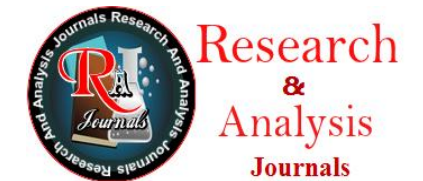The Impact Analysis of Youtube Social Media Platform Development towards Behavior Change
Downloads
This study aims to analyze the influence of social media, particularly YouTube, on community behavior changes in preventing stunting in Indonesia. Stunting is a health issue that affects children's physical and cognitive development, with the prevalence in Indonesia reaching approximately 24% in 2023. One of the social media platforms used for education is YouTube, which provides educational content in video format that can reach a wide audience. This research focuses on analyzing the Bincang Online Inspiratif Seri 130 channel, which presents an educational campaign about stunting. The research design used is a Pre-Experimental Design with a One Group Pretest-Posttest Design approach to measure changes in knowledge and behavior of respondents before and after watching the educational video. Data was collected through Google Form-based questionnaires distributed to 67 respondents who had watched the video. The data analysis used the Wilcoxon Signed Rank Test to examine the differences between pretest and posttest results. The findings indicate that the educational campaign through YouTube significantly influences the increase in knowledge and changes in the community's behavior regarding stunting prevention. This study also found that social, economic, and cultural factors affect how well the educational message is received and applied in daily life. Based on these findings, social media, especially YouTube, has great potential to be used in effective health campaigns that are relevant to the local context to reduce the prevalence of stunting.
Badan Kependudukan dan Keluarga Berencana Nasional (BKKBN). (2023). Laporan prevalensi stunting di Indonesia tahun 2023.
Glanz, K., & Bishop, D. B. (2010). The role of behavioral science theory in health promotion. Annual Review of Public Health, 31, 399–418. https://doi.org/10.1146/annurev.publhealth.012809.103604
Fitriani, A., & Hasibuan, R. (2021). Pengaruh pengajaran melalui media digital terhadap perubahan perilaku masyarakat dalam pencegahan penyakit menular. Jurnal Kesehatan Masyarakat, 9(3), 220-230. https://doi.org/10.1016/j.kesmas.2021.0805
Handayani, D., & Hidayat, W. (2023). Evaluasi efektivitas kampanye kesehatan melalui media sosial terhadap peningkatan pengetahuan masyarakat. Jurnal Komunikasi dan Kesehatan, 12(1), 1-13. https://doi.org/10.1007/jkk.2023.0025
Hidayati, N., & Susanto, A. (2021). Penggunaan Media Sosial untuk Kampanye Kesehatan: Pengaruh terhadap Perubahan Perilaku Masyarakat. Jurnal Komunikasi Kesehatan, 15(2), 101-113.
Glanz, K., & Bishop, D. B. (2020). The role of behavioral science theory in promoting health behavior change. Annual Review of Public Health, 41, 423-440. https://doi.org/10.1146/annurev-publhealth-040119-094634
Li, Y., & Zhang, Z. (2021). The impact of media interactivity on health information processing: The role of social media in public health campaigns. Health Communication, 36(6), 766-776. https://doi.org/10.1080/10410236.2021.1939059
Pratama, S., & Siti, M. (2020). Penerapan desain eksperimen dalam penelitian sosial: Studi kasus pada penggunaan teknologi di era pandemi. Jurnal Penelitian Sosial, 15(2), 103-115. https://doi.org/10.1108/jps.2020.0045
McQuail, D., & Siune, K. (2022). Media and Communication Theory: An Overview. Sage Publications.
Ramadhanty, A. (2020). Tren pemasaran digital di era media sosial.
Severin, W. J., & Tankard, J. W. (2011). Communication theories: Origins, methods, and uses in the mass media (7th ed.). Longman.
Sanjaya, M., Mustari, M., & Fitra, L. (2023). Faktor sosial-ekonomi dalam kampanye kesehatan berbasis media sosial: Studi kasus tentang pengaruh konten video terhadap perubahan perilaku masyarakat. Jurnal Komunikasi Kesehatan, 9(1), 55-67. https://doi.org/10.1007/jkcs.2023.0142
Sanjaya, A., et al. (2023). Factors affecting health campaign effectiveness through social media in Indonesia. Journal of Social Media in Health, 14(3), 45-59.
Sanjaya, K., Subari, S., & Indrawati, M. (2023). The role of user interaction in health campaigns on YouTube: Effects on behavior change. International Journal of Social Media and Communication, 8(1), 34-46. https://doi.org/10.1093/jcmc/zmab061
Sugiyono. (2012). Metode Penelitian Kuantitatif, Kualitatif, dan R&D. Alfabeta.
Sugiyono. (2016). Metode Penelitian Kuantitatif, Kualitatif dan Kombinasi (Mixed Methods). Alfabeta.
Suwandi, A., & Hidayah, S. (2020). Kampanye penanggulangan stunting melalui media sosial: Studi kasus Bincang Online Inspiratif Seri 130.
Umar, H. (2013). Metode Penelitian untuk Skripsi dan Tesis. Rajawali Pers.
Villarreal, S. A., & Leyva, P. G. (2021). Social media as an innovative platform for public health education: A case study on stunting prevention. Journal of Health Communication, 26(2), 175–190.
Wong, L., et al. (2022). Barriers to healthy behavior adoption in rural communities: A study on stunting prevention in Indonesia. Public Health Policy Journal, 38(4), 278-290.
Wong, L., Matthews, A., & Turner, T. (2021). Behavior change interventions through digital media: A systematic review of YouTube health campaigns. Journal of Medical Internet Research, 23(5), e26093. https://doi.org/10.2196/26093
We Are Social. (2020). Digital 2020: Indonesia
Copyright (c) 2025 Ni Putu Limarandani, Kartika SNLAS, AA Aditya Kusuma Patera , AA Ketut Patera

This work is licensed under a Creative Commons Attribution 4.0 International License.
All Content should be original and unpublished.



